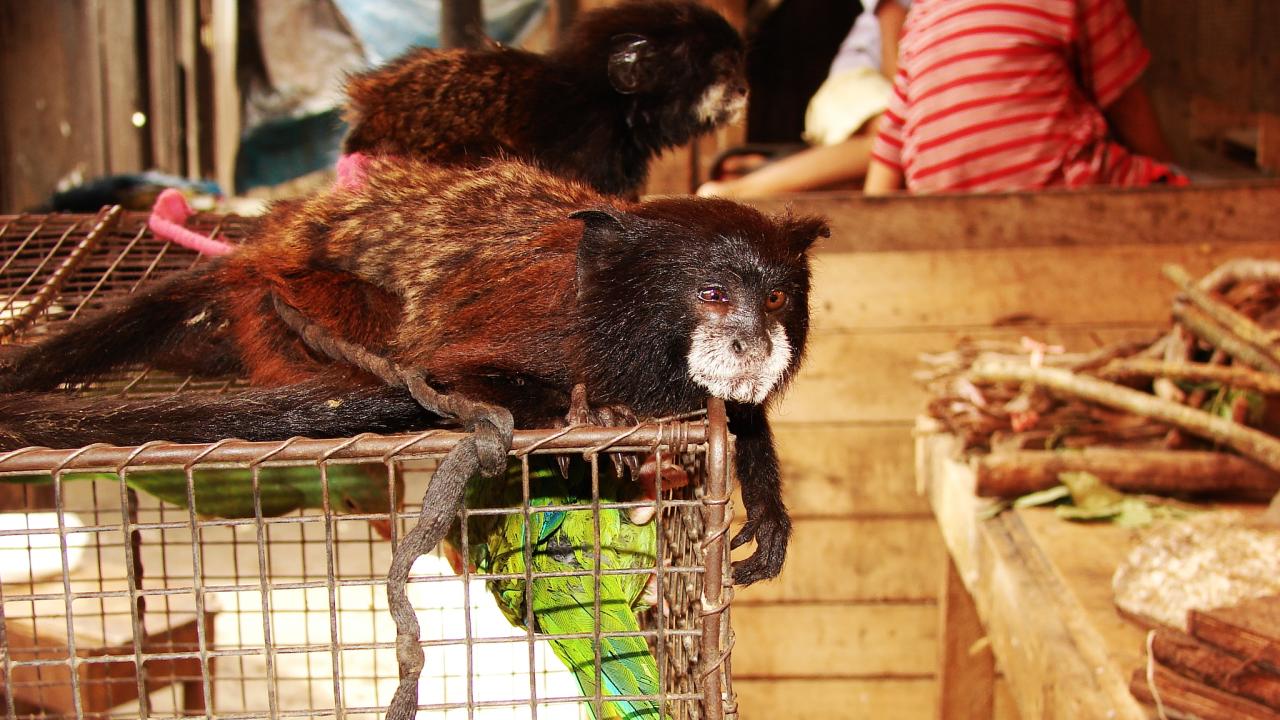
NEW PUB: Diversity and Prevalence of Zoonotic Infections at the Animal-Human Interface of Primate Trafficking in Peru
A study focused on the animal-human interface of primate trafficking in Peru has just been published in PLOS ONE. Authored by a team of scientists who had contributed to our legacy project PREDICT, this publication highlights the risks of parasite spread and disease emergence in wildlife trafficking scenarios.
The team conducted a multi-parasite screening targeting the detection of zoonotic infections in wild-caught monkeys in nine Peruvian cities across three contexts: captivity (zoos and rescue centers), pet (households), and trade (trafficked or recently confiscated). Findings from their study demonstrated that parasite and disease threats continued beyond the markets where wildlife was initially sold.
Read the publication at the link below for findings and recommendations:
